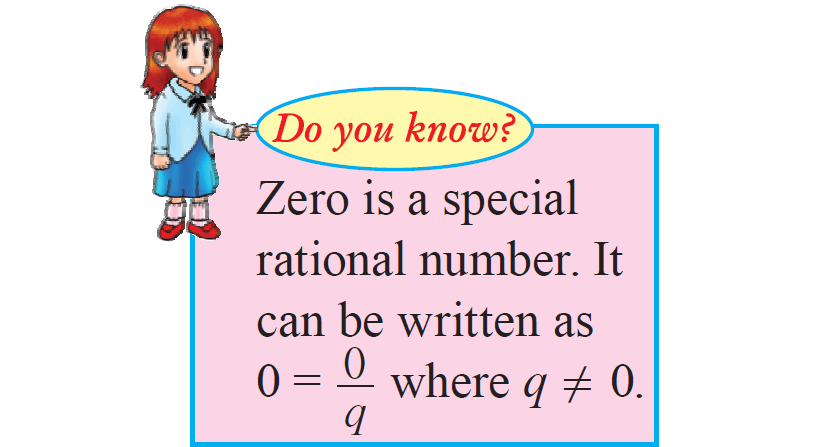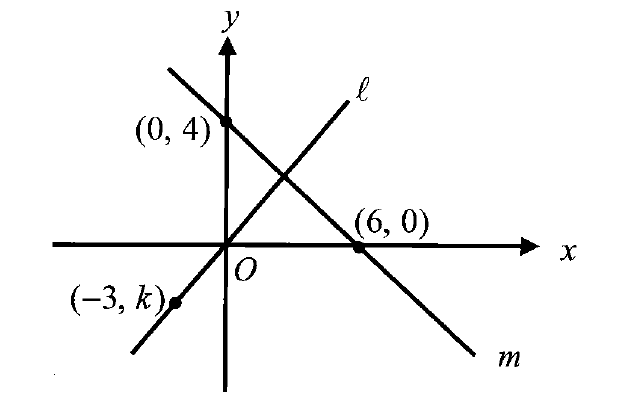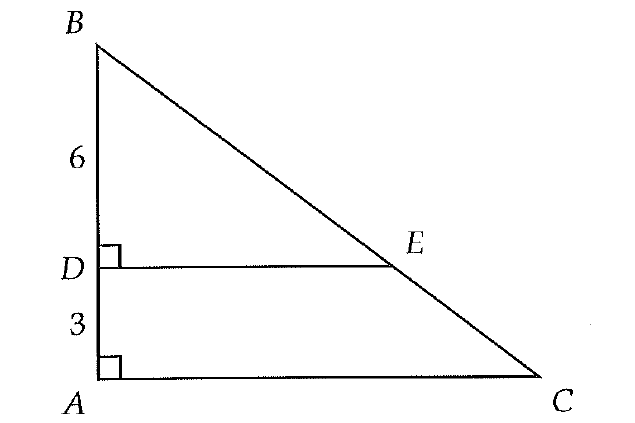PROPERTIES OF RATIONAL NUMBERS
The properties of rational numbers are
∙ Closure Property
∙ Commutative Property
∙ Associative Property
∙ Distributive Property
∙ Identity Property
∙ Inverse Property
Let us explore these properties on the four binary operations (Addition, subtraction, multiplication and division) in mathematics.
Closure Property
(i) Addition :
The sum of any two rational numbers is always a rational number. Thus, Q is closed under addition.
If ᵃ⁄b and ᶜ⁄d are any two rational numbers, then
(ᵃ⁄b + ᶜ⁄d) is also a rational number
Example :
²⁄₉ + ⁴⁄₉ = ⁶⁄₉
= ⅔
⅔ is a rational number
(ii) Subtraction :
The difference between any two rational numbers is always a rational number.
Hence Q is closed under subtraction.
If ᵃ⁄b and ᶜ⁄d are any two rational numbers, then
(ᵃ⁄b - ᶜ⁄d) is also a rational number.
Example :
⁵⁄₉ - ²⁄₉ = ³⁄₉
= ⅓
⅓ is a rational number.
(iii) Multiplication :
The product of two rational numbers is always a rational number. Hence Q is closed under multiplication.
If ᵃ⁄b and ᶜ⁄d are any two rational numbers, then
ᵃ⁄b x ᶜ⁄d = ᵃᶜ⁄bd
ᵃᶜ⁄bd is a rational number.
Example :
⁵⁄₉ x ²⁄₉ = ¹⁰⁄₈₁
¹⁰⁄₈₁ is a rational number.
(iv) Division :
The collection of non-zero rational numbers is closed under division.
If ᵃ⁄b and ᶜ⁄d are two rational numbers, such that b ≠ 0 and c/d ≠ 0, then (ᵃ⁄b ÷ ᶜ⁄d) is always a rational number.
Example :
⅔ ÷ ⅓ = ⅔ x ³⁄₁
= ²⁄₁
²⁄₁ is a rational number.
Commutative Property
(i) Addition :
Addition of two rational numbers is commutative.
If ᵃ⁄b + ᶜ⁄d are any two rational numbers, then
ᵃ⁄b + ᶜ⁄d = ᶜ⁄d+ ᵃ⁄b
Example :
²⁄₉ + ⁴⁄₉ = ⁶⁄₉ = ⅔
⁴⁄₉ + ²⁄₉ = ⁶⁄₉ = ⅔
So,
²⁄₉ + ⁴⁄₉ = ⁴⁄₉ + ²⁄₉
Therefore, Commutative Property is true for addition of two rational numbers.
(ii) Subtraction :
Subtraction of two rational numbers is NOT commutative.
If ᵃ⁄b and ᶜ⁄d are any two rational numbers, then
ᵃ⁄b - ᶜ⁄d ≠ ᶜ⁄d - ᵃ⁄b
Example :
⁵⁄₉ - ²⁄₉ = ³⁄₉ = ⅑
²⁄₉ - ⁵⁄₉ = ⁻³⁄₉ = ⁻¹⁄₉
And,
⁵⁄₉ - ²⁄₉ ≠ ²⁄₉ - ⁵⁄₉
Therefore, Commutative property is NOT true for subtraction of two rational numbers.
(ii) Multiplication :
Multiplication of two rational numbers is commutative.
If ᵃ⁄b and ᶜ⁄d are any two rational numbers, then
ᵃ⁄b x ᶜ⁄d = ᶜ⁄d x ᵃ⁄b
Example :
⁵⁄₉ x ²⁄₉ = ¹⁰⁄₈₁
²⁄₉ x ⁵⁄₉ = ¹⁰⁄₈₁
So,
⁵⁄₉ x ²⁄₉ = ²⁄₉ x ⁵⁄₉
Therefore, Commutative property is true for multiplication of two rational numbers.
(iv) Division :
Division of two rational numbers is NOT commutative.
If ᵃ⁄b and ᶜ⁄d are two rational numbers, then
ᵃ⁄b ÷ ᶜ⁄d ≠ ᶜ⁄d ÷ ᵃ⁄b
Example :
⅔ ÷ ⅓ = ⅔ x ³⁄₁ = ²⁄₁
⅓ ÷ ⅔ = ⅓ ÷ ³⁄₂ = ½
And,
⅔ ÷ ⅓ ≠ ⅓ ÷ ⅔
Therefore, Commutative property is NOT true for division two rational numbers.
Associative Property
(i) Addition :
Addition of rational numbers is associative.
If ᵃ⁄b, ᶜ⁄d and ᵉ⁄f are any three rational numbers, then
ᵃ⁄b + (ᶜ⁄d + ᵉ⁄f) = (ᵃ⁄b + ᶜ⁄d) + ᵉ⁄f
Example :
²⁄₉ + (⁴⁄₉ + ⅑) = ²⁄₉ + ⁵⁄₉ = ⁷⁄₉
(²⁄₉ + ⁴⁄₉) + ⅑ = ⁶⁄₉ + ⅑ = ⁷⁄₉
So,
²⁄₉ + (⁴⁄₉ + ⅑) = (²⁄₉ + ⁴⁄₉) + ⅑
Therefore, Associative Property is true for addition of rational numbers.
(ii) Subtraction :
Subtraction of rational numbers is NOT associative.
If ᵃ⁄b, ᶜ⁄d and ᵉ⁄f are any three rational numbers, then
ᵃ⁄b - (ᶜ⁄d - ᵉ⁄f) ≠ (ᵃ⁄b - ᶜ⁄d) - ᵉ⁄f
Example :
²⁄₉ - (⁴⁄₉ - ⅑) = ²⁄₉ - ³⁄₉ = ⁻¹⁄₉
(²⁄₉ - ⁴⁄₉) - ⅑ = ⁻²⁄₉ - ¹⁄₉ = ⁻³⁄₉ = ⁻¹⁄₃
And,
²⁄₉ - (⁴⁄₉ - ⅑) ≠ (²⁄₉ - ⁴⁄₉) - ⅑
Therefore, Associative property is NOT true for subtraction of rational numbers.
(iii) Multiplication :
Multiplication of rational numbers is associative.
If ᵃ⁄b, ᶜ⁄d and ᵉ⁄f are any three rational numbers, then
ᵃ⁄b x (ᶜ⁄d x ᵉ⁄f) = (ᵃ⁄b x ᶜ⁄d) x ᵉ⁄f
Example :
²⁄₉ x (⁴⁄₉ x ⅑) = ²⁄₉ x ⁴⁄₈₁ = ⁸⁄₇₂₉
(²⁄₉ x ⁴⁄₉) x ⅑ = ⁸⁄₈₁ x ⅑ = ⁸⁄₇₂₉
So,
²⁄₉ x (⁴⁄₉ x ⅑) = (²⁄₉ x ⁴⁄₉) x ⅑
Therefore, Associative property is true for multiplication of rational numbers.
(iii) Division :
Division of rational numbers is NOT associative.
If ᵃ⁄b, ᶜ⁄d and ᵉ⁄f are any three rational numbers, then
ᵃ⁄b ÷ (ᶜ⁄d ÷ ᵉ⁄f) ≠ (ᵃ⁄b ÷ ᶜ⁄d) ÷ ᵉ⁄f
Example :
²⁄₉ ÷ (⁴⁄₉ ÷ ⅑) = ²⁄₉ ÷ 4 = ¹⁄₁₈
(²⁄₉ ÷ ⁴⁄₉) ÷ ⅑ = ½ ÷ ⅑ = ⁹⁄₂
And,
²⁄₉ ÷ (⁴⁄₉ ÷ ⅑) ≠ (²⁄₉ ÷ ⁴⁄₉) ÷ ⅑
Therefore, Associative property is NOT true for division of rational numbers.
Distributive Property
(i) Distributive Property of Multiplication over Addition :
Multiplication of rational numbers is distributive over addition.
If ᵃ⁄b, ᶜ⁄d and ᵉ⁄f are any three rational numbers, then
ᵃ⁄b x (ᶜ⁄d + ᵉ⁄f) = (ᵃ⁄b x ᶜ⁄d) + (ᵃ⁄b x ᵉ⁄f)
Example :
⅓ x (⅖ + ⅕) :
= ⅓ x ⁽² ⁺ ¹⁾⁄₅
= ⅓ x ³⁄₅
= ³⁄₁₅
= ⅕ ----(1)
⅓ x ⅖ + ⅓ x ⅕ :
= ²⁄₁₅ + ¹⁄₁₅
= ⁽² ⁺ ¹⁾⁄₁₅
= ³⁄₁₅
= ⅕ ----(2)
From (1) and (2),
⅓ x (⅖ + ⅕) = ⅓ x ⅖ + ⅓ x ⅕
Therefore, Multiplication is distributive over addition.
(ii) Distributive Property of Multiplication over Subtraction :
Multiplication of rational numbers is distributive over subtraction.
If ᵃ⁄b, ᶜ⁄d and ᵉ⁄f are any three rational numbers, then
ᵃ⁄b x (ᶜ⁄d + ᵉ⁄f) = (ᵃ⁄b x ᶜ⁄d) + (ᵃ⁄b x ᵉ⁄f)
Example :
⅓ x (⅖ - ⅕) :
= ⅓ x ⁽² ⁻ ¹⁾⁄₁₅
= ²⁄₁₅ - ¹⁄₁₅
= ⁽² ⁻ ¹⁾⁄₁₅
= ¹⁄₁₅ ----(1)
⅓ x ⅖ - ⅓ x ⅕ :
= ²⁄₁₅ - ¹⁄₁₅
= ⁽² ⁻ ¹⁾⁄₁₅
= ¹⁄₁₅ ----(2)
From (1) and (2),
⅓ x (⅖ - ⅕) = ⅓ x ⅖ - ⅓ x ⅕
Therefore, Multiplication is distributive over subtraction.
Identity Property
(i) Additive Identity :
The sum of any rational number and zero is the rational number itself.
If ᵃ⁄b is any rational number, then
ᵃ⁄b + 0 = 0 + ᵃ⁄b = ᵃ⁄b
Zero is the additive identity for rational numbers.
Example :
²⁄₇ + 0 = 0 + ²⁄₇ = ²⁄₇
(ii) Multiplicative Identity :
The product of any rational number and 1 is the rational number itself. ‘1’ is the multiplicative identity for rational numbers.
If ᵃ⁄b is any rational number, then
ᵃ⁄b x 1 = 1 x ᵃ⁄b = ᵃ⁄b
Example :
⁵⁄₇ x 1 = 1 x ⁵⁄₇ = ⁵⁄₇
Inverse Property
(i) Additive Inverse :
-ᵃ⁄b is the negative or additive inverse of ᵃ⁄b.
If ᵃ⁄b is a rational number, then there exists a rational number -ᵃ⁄b such that
ᵃ⁄b + (-ᵃ⁄b) = -ᵃ⁄b + ᵃ⁄b = 0
Example :
Additive inverse of ⅗ is -⅗.
Additive inverse of -⅗ is ⅗.
Additive inverse of 0 is 0 itself.
(ii) Multiplicative Inverse or Reciprocal :
For every rational number ᵃ⁄b, b ≠ 0, there exists a rational number ᶜ⁄d such that ᵃ⁄b x ᶜ⁄d = 1.
Then, ᶜ⁄d is the multiplicative inverse of ᵃ⁄b.
If b⁄ₐ is a rational number, then ᵃ⁄b is the multiplicative inverse or reciprocal of it.
Example :
The multiplicative inverse of ⅔ is ³⁄₂.
The multiplicative inverse of ⅓ is 3.
The multiplicative inverse of 3 is ⅓.
The multiplicative inverse of 1 is 1.
The multiplicative inverse of 0 is undefined.
Multiplication by Zero
Every rational number multiplied with 0 gives 0.
If ᵃ⁄b is any rational number, then
ᵃ⁄b x 0 = 0 x ᵃ⁄b = 0
Example :
⁵⁄₇ x 0 = 0 x ⁵⁄₇ = 0

Kindly mail your feedback to v4formath@gmail.com
We always appreciate your feedback.
©All rights reserved. onlinemath4all.com
Recent Articles
-
Digital SAT Math Problems and Solutions (Part - 106)
Feb 04, 25 08:16 AM
Digital SAT Math Problems and Solutions (Part - 106) -
SAT Math Resources (Videos, Concepts, Worksheets and More)
Feb 04, 25 08:15 AM
SAT Math Resources (Videos, Concepts, Worksheets and More) -
Digital SAT Math Problems and Solutions (Part - 107)
Feb 04, 25 08:11 AM
Digital SAT Math Problems and Solutions (Part - 107)

